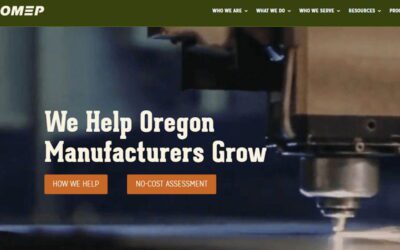“Those who ignore history are doomed to repeat it.” – Winston Churchill
There are repeating patterns throughout history, in Nature, in Economics, in International Relations, and yes, in business. One of the patterns that I have been studying is that of level of attention, enthusiasm, and resources applied toward continuous improvement within the manufacturing community.
Henry Ford was among the first to embrace new thinking among his industrial revolutionary peers. There is an oft-related story about how he demanded a supplier package a key component in a very specifically designed wooden crate. Seemingly random slots and holes in the custom packaging must have seemed insane to the vendor, but Ford would have his crew carefully disassemble the shipping crate and utilize the wooden slats as the floorboards in his popular Model A. He was getting parts made and shipped for free, saving substantial costs in the process.
Rebuilding for Success
After Henry Ford’s passing and in the post-World War II environment, there seemed to be a lull in manufacturing creativity. Because the rest of the world’s manufacturing capability had for the most part been destroyed or modified to support the war effort, Americans had little competition and little time or motivation to try to find opportunities for improvement or waste reduction. With enormous backlogs and seemingly endless customer demand, there was no concern about overproduction, large inventories or machine breakdowns. Little thought was given to the transportation, motion, waiting or defects produced.
However, Japan was rebuilding their infrastructure at this time, and they approached it very differently. This crisis created an environment where creativity was not just a nice thing to have, it was an absolute necessity for survival. Prior to their transformation “Made in Japan” was not a positive term.Like Henry Ford, Japan found creative ways to eliminate all the causes of excess cost. They called their process J.I.T. (Just in Time) making and delivering services and products just when they were needed, in just the quantity required, and at the highest possible quality. It took American companies decades to realize the positive impacts of the changes made at companies like Toyota.
New Thinking
Once the recognition began, there was an initial surge of interest and many US companies sought to adopt the techniques perfected in Japan. A steep uptick in J.I.T. excitement occurred among many organizations in the US during the 1980’s, but as the 1990’s approached, teams realized the tremendous amount of work associated with transformation- excitement faded and J.I.T. fatigue set in.
Along came a new book titled Lean Thinking (Womack and Jones) flipped the paradigm again, the cycle started to repeat itself. Companies were re-energized to pick up this new mantle and run with it. The duration of this continuous improvement renaissance lasted a bit longer, but again fatigue set in. People became weary of the terms (One Piece Flow, Takt Time, Kanban, Kaizen) and they began to hang up their Lean Thinking hats, returning to their time worn practices of Batch Manufacturing.
What’s Next?
Do we let fatigue take over and give up our search for operational excellence?
Do we wait for the next new book or new term to which we can attach our wagon?
Thankfully, there are organizations and who refuse to give up on their journeys. They are continuing the race and setting the pace toward World Class Status and Performance. FCC Commercial Furniture in Roseburg Oregon is just one example. I have had the privilege of facilitating four distinct projects at FCC, and would like to relate their process and results in an effort to encourage you and your team to follow their lead.
Project #1 Assembly
This project in the Final Assembly area focused on eliminating WIP (work in process) inventory and streamlining the process to speed up throughput. What previously required a full week is now accomplished in less than one hour. The financial benefits are equally impressive, as average per day output has increased by 33%. A nearly 50% improvement in space utilization freed up enough area to bring a sub-assembly process into line of sight with the team, permitting line side parts presentation. These improvements helped to reduce transportation, inventory, waiting, defects and enormous amounts of non-value added activities.
Project #2 Wood Shop
We moved upstream from the Final Assembly area to their supplier, the wood shop. This area fabricates parts that require wood and laminate sub-assembly. Approximately 15 people work in 2 teams within this department. Distinct team areas are physically separated by a large glue-drying oven. The first team (building) batched material and piled it up in front of the second team (laminating) with little regard to preferred sequence, space utilization or flow.
We divided the 15 people into 3 teams and aligned them so that they now are virtually side-by-side. The huge oven was replaced with three smaller (right sized) tables that incorporate IR heaters. This avoids teams waiting in line to use a monstrosity-shared resource.
In the past each operator would fill out a cut sheet and walk across the shop to the saw department to have material cut to size. They would then walk back, repeating the trip at least one more to retrieve the material. Often, they would make numerous trips, only to find that the material was not yet processed. In addition to the material cutting process, operators were walking thousands of miles per year chasing down missing pieces and parts or getting clarification from the engineering department.
This form of waste (motion and transportation) amounted to a combined 24 hours of non-value added activity for all 15 operators.
The team decided to install Andon lights at every station. A single person on the team (known as a Rover or waterspider) was identified to be responsible to retrieve whatever an operator might require. The eight hours a day spent by the waterspider eliminated 24 hours per day of group walking. Our next step is to minimize the missing information that the waterspider must gather, which is an Engineering / Programming project.
Project #3 CNC Router
Continuing to move upstream, the next project identified was the supplier to the wood shop – the CNC routing department. Like the Assembly and Wood departments, the CNC department team developed a current condition statement that included:
- Excess inventory
- Never ‘On build’ schedule
- Lack of 5-S
- Lack of standardization – programming
- Frequent rework required
- Excessive overtime
- Wasted movement/transportation
The team developed an objective statement as follows:
- Develop a process that will foster flow
- Keep the machines running – improve spindle time
- Eliminate operator walking time/movement
- Provide a ‘showplace’ working environment by using 5-S
- Become a model for the rest of the organization
- Stay on schedule
Utilizing set-up reduction techniques, they saved over $50,000 annually in labor costs as well as gaining hours of new capacity. Exploring new tooling (cutters) technology and programming methods they cut hundreds of hours per year out of machine operating time. Taking a lesson from the wood shop, they implemented a ‘Rover’ to help the operators keep ‘operating’ and were able to take an entire day of lead-time out of the schedule.
Conclusions
FCC Commercial Furniture is setting the pace and the example for all Oregon manufacturers. They are relentlessly searching for the next plateau of performance. They have not allowed themselves to be caught up in a the ‘Book of the Month’ club mentality, randomly moving from one catch phrase to the next. Their vision to be ‘World Class’ is not a fashion statement or target dictated by winds of change.
They are staying the course, working hard at it every day, building a team that thinks like owners to establish a culture of positive change and open dialogue between co-workers.
They have avoided the J.I.T., Re-engineering, Synchronous Management, Lean Thinking Fatigue syndrome by simply focus on getting better every day and realizing that it is an endless journey.
I would say; “Well Done!”, but…
…To their credit they realize that they will never be “done”.



